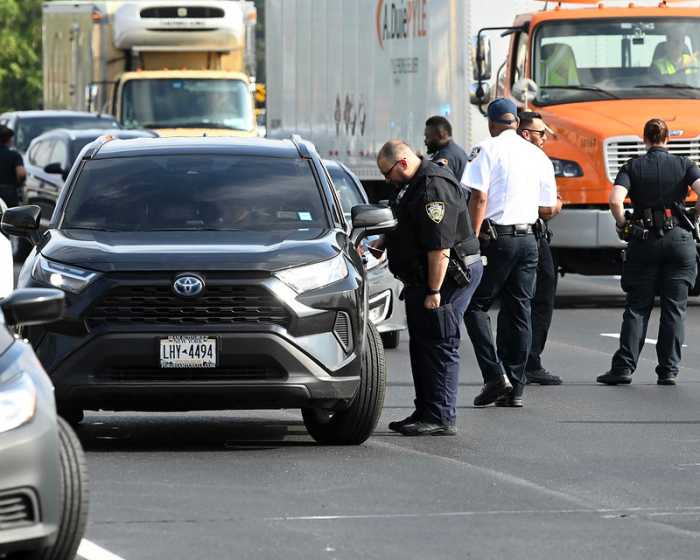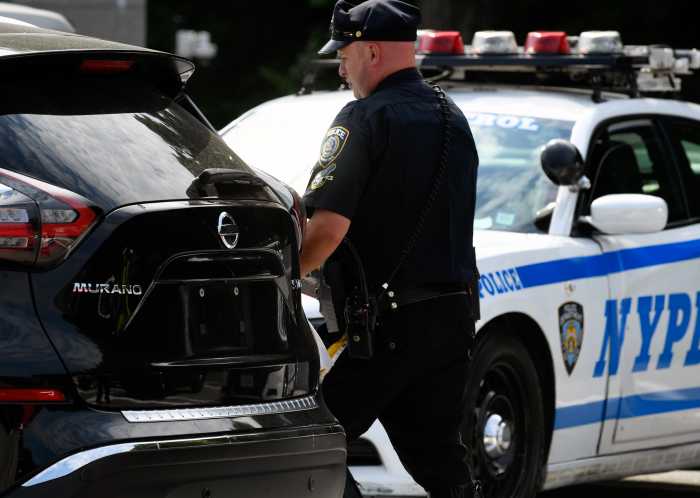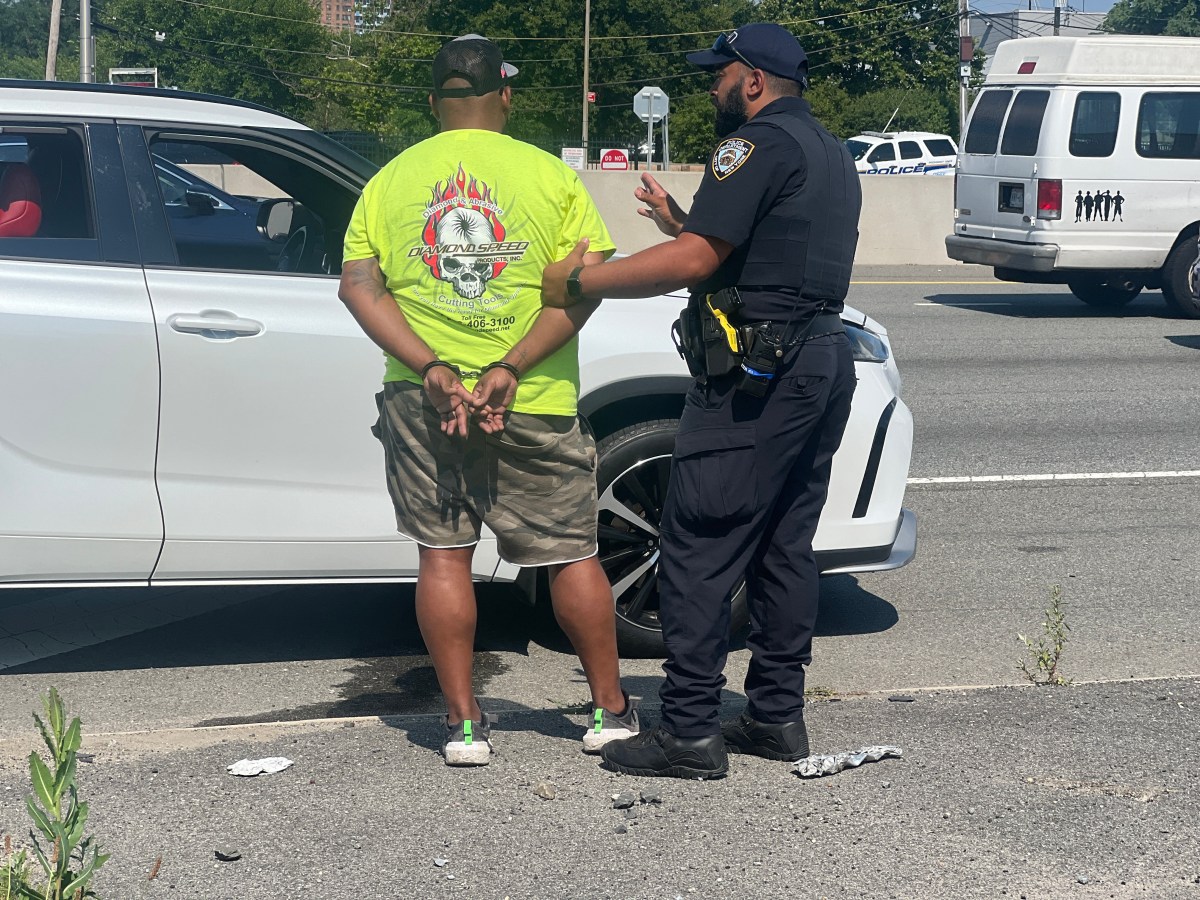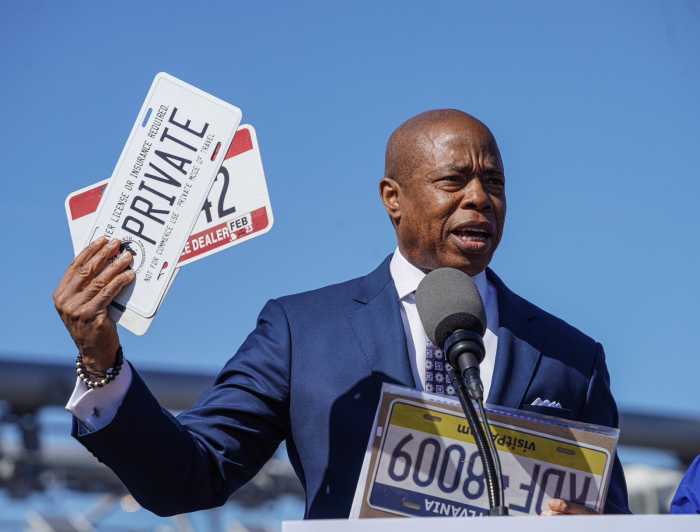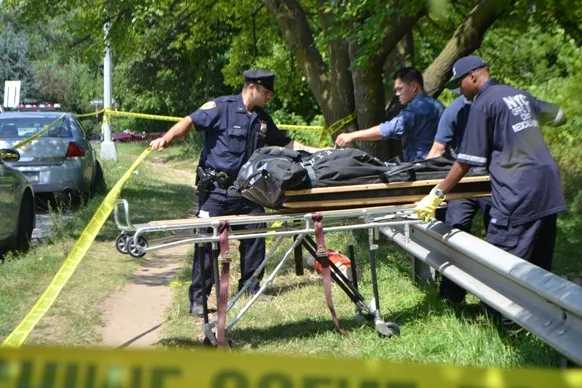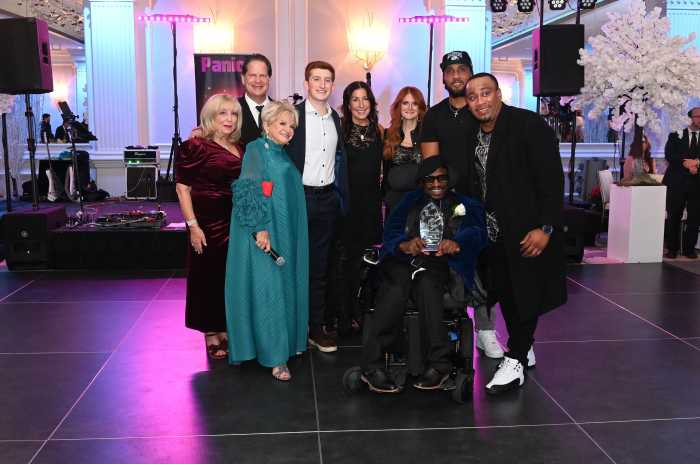An old-school New York hustle has reached new heights – and it’s making our streets less safe while sapping much-needed infrastructure funding.
We’re talking, of course, about “ghost plates.” While the act of altering a license plate to evade the law isn’t new, the scheme proliferated during the pandemic and has reached crisis proportions. The number of vehicles with unreadable plates evading tolls and traffic fines jumped by 30% this year, costing the city as anywhere from $50 to $200 million each year. That’s money that could be used to fund improvements to our buses, subways and roads.
Be it the speed camera outside your local school or the toll on the Verrazzano Bridge, more drivers are breaking the law by defacing or obscuring their license plates to avoid detection. The guy on your block who’s been using that same paper New Jersey license plate for the last two years? He’s no hero. It’s a fake plate, he’s breaking the law, and by refusing to pay his fair share, he’s costing the rest of us big bucks.
Back in March, Governor Kathy Hochul and Mayor Eric Adams announced a joint task force dedicated to identifying and impounding cars that are virtually untraceable by cameras and toll readers because of forged or defaced license plates. Increasing penalties, prohibiting the sale of plate covers, and restricting DMV registration transactions for serial scofflaw drivers who refuse to pay tolls are all crucial steps.
But—we have to admit—toll evaders are nothing if not crafty and creative. With each new government intervention, drivers determined to skimp out on the money they owe come up with new ways to beat tickets and tolls. That’s why we need to be proactive and creative with our solutions. Luckily we have the tools to do just that.
The future of ghost car enforcement is not more crackdowns by cops but more efficient tech and more effective rules. Since the NYC Department of Transportation put the first traffic enforcement cameras on city streets in the 1990s, they’ve proven to be extraordinarily effective at reducing speeding and saving lives. With these cameras, we can use a proven tool to tackle an evolving challenge.
Newer camera systems can identify partially-blocked plates as well as the make and model of a vehicle, then use that combined data to search the vehicle registration. Upgraded cameras can also track patterns, so if a driver runs the same red light or speeds down the same block every day, law enforcement can use this information to catch them in person and make an arrest.
Building on Albany’s expansion of the red-light camera program, we can also make traffic enforcement cameras even more effective by using VIN numbers to identify drivers in addition to license plates or adding a “block the box” function to existing red light cameras. We can also implement a program to allow bystanders to report fraudulent or stolen plates, modeled after the very-effective program for reporting idling trucks.
Like them or not, traffic cameras are effective. Fewer tickets are issued over time and fewer crashes take place, undoubtedly due to changes in driver behavior. But defaced and phony license plates are putting that success in danger.
Toll beaters are clever, but we can be cleverer. Let’s bring ghost car enforcement – and public safety – to the next level.
Read More: https://www.amny.com/opinion/




